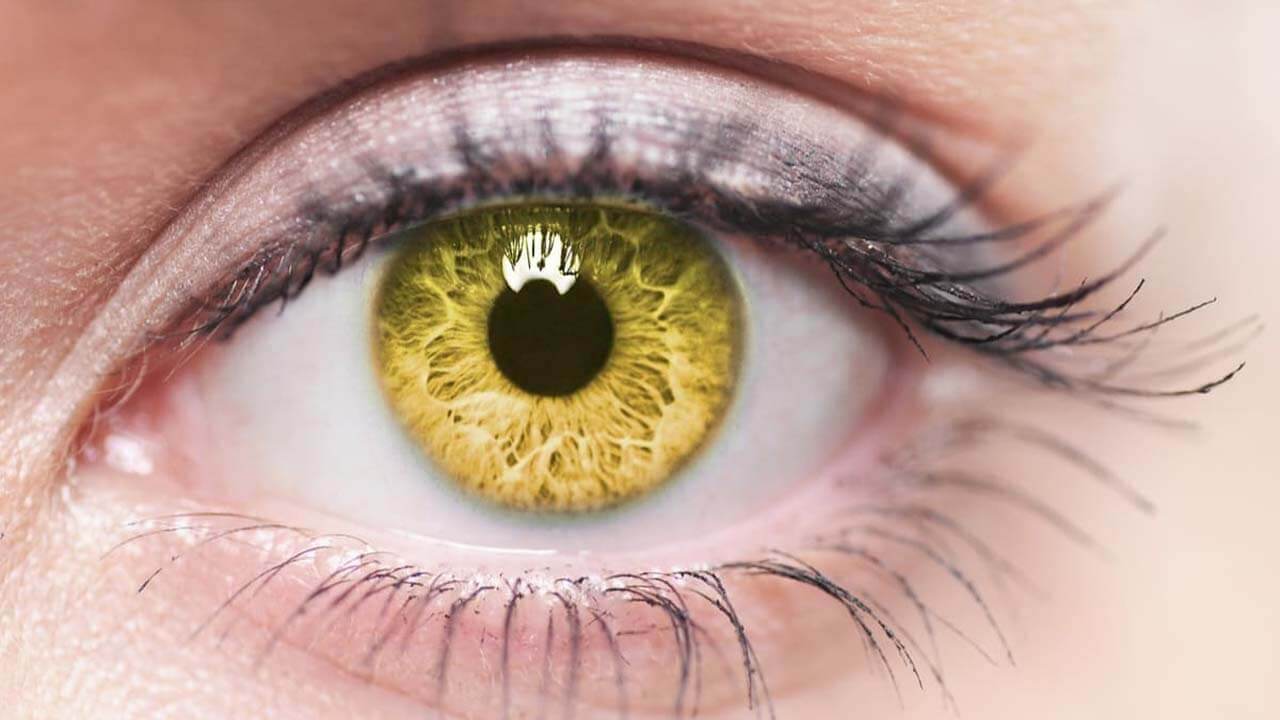Understanding Cancer: An Uncontrolled Cellular Frenzy
Cancer is a broad term for a group of diseases that cause cells to grow uncontrollably. Normally, our body has a finely tuned system for regulating cell growth and death. This ensures that old or damaged cells are replaced by healthy ones in a balanced way.
What Goes Wrong? Breakdown in Cellular Control
However, in cancer, this process goes awry. Mutations in genes that control cell growth and division lead to the formation of abnormal cells. These rogue cells multiply rapidly, forming tumors that can invade and damage healthy tissues.
The Scary Part: Cancer’s Spread
The most concerning aspect of cancer is its ability to spread. Cancerous cells can travel through the bloodstream or lymphatic system, establishing new tumors in distant parts of the body. This process, known as metastasis, is what makes cancer so serious and potentially life-threatening.
A Multitude of Foes: Different Types of Cancer
There are many different types of cancer, each affecting a specific organ or tissue. Some of the most common cancers include breast cancer, lung cancer, colon cancer, and prostate cancer. Early detection and treatment are crucial for managing cancer effectively.
The Rebel Cells Within: Unveiling the Causes of Cancer
Cancer. Just the word itself sends shivers down many spines. But what exactly turns our loyal body cells into these rebellious, fast-growing troublemakers? Buckle up, because the causes of cancer are a complex story with several villainous characters!
Cancer’s Widespread Impact
Each year, over 1,600,000 people in the United States receive a cancer diagnosis, and approximately over 500,000 individuals succumb to the disease annually, according to the National Cancer Institute.
Statistics reveal that over 30 percent of men and women will face a cancer diagnosis during their lifetime. Cancer ranks as the second-leading cause of death in the U.S., following heart disease.
While anyone can develop cancer, the likelihood increases with age, nearly 90 percent of cancer cases occur in individuals aged 50 and older.
Encouragingly, advances in screening and treatment have led to improving survival rates for many cancer types.
The Instigator: Genetic Mutations
Imagine your genes as the blueprints for your body. Sometimes, mistakes can occur during cell division, creating errors in these blueprints. These errors, called mutations, can affect genes that control cell growth. Normally, these genes act like brakes on a car, keeping cell division in check. But when mutated, the brakes fail, and cells start dividing uncontrollably – the hallmark of cancer.
Not Just Bad Genes: Environmental Culprits
While genetics play a role, don’t blame your parents just yet! Our environment is also a battleground where cancer can take root. Here are some environmental nasties that can contribute to cancer development:
The Sun’s Fury: Ultraviolet Radiation
Ever heard the saying “a little sun is good for you”? Well, too much of anything can be bad, and sunshine is no exception. Excessive exposure to ultraviolet (UV) radiation from the sun is a major risk factor for skin cancer. Imagine UV rays as tiny daggers poking holes in your DNA, increasing the chance of mutations that can lead to cancer.
Smokey the Bandit: Smoking and Secondhand Smoke
Cigarette smoke is a notorious villain, packed with cancer-causing chemicals called carcinogens. These carcinogens damage your DNA, paving the way for abnormal cell growth, particularly in the lungs. But don’t think you’re safe just because you don’t smoke! Inhaling secondhand smoke exposes you to the same harmful carcinogens, increasing your cancer risk.
Diet Gone Wrong: What You Eat Matters
A diet heavy in processed foods, red meat, and unhealthy fats can contribute to cancer development. Think of it as feeding the rebel cells the wrong fuel, promoting their growth. On the other hand, a diet rich in fruits, vegetables, and whole grains can help keep your body healthy and potentially reduce cancer risk.
The Couch Potato Lifestyle: Get Up and Move!
A lack of physical activity has been linked to an increased risk for certain cancers. Exercise helps keep your body healthy overall and can improve your immune system’s ability to fight off abnormal cells. So ditch the couch and get moving!
Age: The Creeping Threat
As we age, our bodies accumulate wear and tear, increasing the risk of mutations in our DNA. Think of it like an old book with faded pages – errors become more likely over time. This is why the risk of many cancers increases with age.
Family Matters: The Hereditary Factor
Some genes can increase your susceptibility to cancer. If certain cancers run in your family, it’s wise to talk to your doctor about potential risks and appropriate screening measures. Don’t panic though! Having a family history doesn’t guarantee you’ll get cancer, but it’s a factor to be aware of.
Remember, this is just the first line of defense! By understanding the risk factors of cancer, you can make informed choices to safeguard your health. Stay tuned for future articles where we’ll explore ways to prevent and fight this complex disease!
The Great Cancer Caper: Unveiling the Sneaky Disease
Cancer can be a sly villain, hiding in the shadows of your body. But fear not, brave citizen! We have a team of medical detectives – doctors and specialists – armed with high-tech tools to diagnose cancer and get you the treatment you need. Let’s delve into their fascinating bag of tricks!
Scene 1: The Interrogation – Taking Your Medical History
The first step is like any good detective story – gathering clues! Your doctor will ask detailed questions about your medical history, family background, and any symptoms you might be experiencing. Think of it as piecing together a puzzle, where each detail helps paint a clearer picture.
Scene 2: The Body Search – Physical Examination
Next comes a thorough physical examination. Your doctor will be looking for any unusual lumps, bumps, or changes in your skin or other tissues. It might not be the most glamorous part of the investigation, but it’s crucial for uncovering hidden clues.
Scene 3: High-Tech Help – Imaging Tests
Just like detectives rely on fingerprints and security footage, doctors use amazing technology to get a better look inside your body. Here are some high-tech suspects in our line-up:
- X-rays: These provide basic snapshots of your bones and internal organs, helping to identify abnormalities.
- CT Scans: Think of these as super-powered X-rays that create detailed cross-sectional images, giving doctors a clearer view of suspicious areas.
- MRIs: These use powerful magnets and radio waves to create detailed images of organs, soft tissues, and even the brain.
Scene 4: Taking a Tissue Sample – Biopsy
Sometimes, the detectives need a closer look at a suspicious area. This is where a biopsy comes in. A tiny tissue sample is extracted, either with a needle or during a minor surgery. The sample is then analyzed in a lab under a powerful microscope to see if cancer cells are present.
Cracking the Case: Putting the Pieces Together
The results from all these investigations are combined to form a diagnosis. Doctors may also order additional tests depending on the specific situation. Once they have a clear picture, they can discuss treatment options with you.
Early detection is key! Regular checkups and being aware of your body are important tools in the fight against cancer. Stay tuned for future articles where we’ll explore different treatment options and how to stay strong throughout your cancer journey!
The Many Faces of Cancer: A Beginner’s Guide to Different Types
Cancer isn’t a single villain, but rather a cunning enemy with many disguises. Each type of cancer affects a specific part of the body and has its own unique characteristics. Let’s demystify the different types of cancer with this quick guide:
Carcinomas: The Most Common Culprits
These villains make up about 80-90% of all cancers. They originate in the cells that line or cover various organs and tissues. Some common examples include:
- Breast Cancer: Affects breast tissue in both men and women, though it’s more prevalent in females. Early detection and treatment are crucial.
- Lung Cancer: Often linked to smoking, lung cancer affects the tissues of the lungs.
- Colon Cancer: This cancer starts in the colon or rectum (large intestine). Regular screenings are recommended for early detection.
- Prostate Cancer: Develops in the prostate gland, a male reproductive organ.
Sarcomas: Targeting Connective Tissues
These villains arise in the body’s connective tissues, such as bones, muscles, cartilage, and fat. Here are a couple of examples:
- Bone Cancer: This cancer affects the bones and can cause pain, swelling, and fractures.
- Soft Tissue Sarcomas: These cancers develop in soft tissues like muscles, fat, and blood vessels. There are many subtypes, each with varying characteristics.
Leukemias: Cancers of the Blood
Leukemias are a unique group that affect the blood and bone marrow, the body’s blood cell production center. Here’s a spotlight on two main types:
- Leukemia: This cancer disrupts the production of healthy white blood cells, hindering the body’s ability to fight infection.
- Lymphoma: This cancer affects the lymphatic system, a network of vessels and tissues that play a vital role in immunity.
Understanding Cancer Survival Rates: A Beacon of Hope
Cancer survival rates can be a confusing topic, filled with numbers and statistics. But fear not! This article aims to shed light on what these rates mean and how to interpret them.
Cancer survival rates typically refer to the percentage of people who live for a specific period, often five years, after their diagnosis. It’s important to remember that these are estimates based on large groups of people. Individual experiences can vary depending on several factors, including:
- The type of cancer: Some cancers, like testicular cancer, have very high survival rates, while others, like pancreatic cancer, have lower rates.
- The stage of diagnosis: Early detection and treatment significantly improve survival chances.
- The person’s overall health: Age, underlying medical conditions, and general health can all play a role.
Looking Beyond the Numbers: A Reason for Hope
While survival rates offer valuable information, they shouldn’t be the sole source of hope. Here’s why:
- Constant Improvements: Medical advancements in diagnosis, treatment, and personalized medicine are leading to steadily increasing survival rates for many cancers.
- Quality of Life: Survival rates often focus on lifespan, but advancements also aim to improve the quality of life for cancer patients during and after treatment.
- Individual Stories: Survival rates are population averages. Many people live much longer than the estimated survival rate for their specific cancer.
By understanding cancer survival rates and their limitations, you can gain a balanced perspective and focus on proactive measures like prevention, early detection, and maintaining a healthy lifestyle.
Battling the Beast: Unveiling Cancer Treatment Options
Modern medicine offers a powerful arsenal of weapons to fight this complex disease. Let’s suit up and explore the various treatment options available, turning you from a passive patient into an active participant in your own health journey.
The All-Star Treatment Team: Surgery, Radiation, and Chemotherapy
These are the heavy hitters in the fight against cancer, often working together in powerful combinations. Here’s a closer look at each:
- The Surgical Strike: Imagine a skilled surgeon as a superhero, wielding a scalpel like a laser sword to remove cancerous tumors with precision. Surgery is often the first line of defense, aiming for complete removal of the cancer.
- Radiation Rangers: Zapping Away Cancer Cells: Radiation therapy uses high-energy beams of radiation, like X-rays or gamma rays, to target and destroy cancer cells. Think of it as a team of tiny superheroes shrinking and blasting the enemy forces! Radiation can be used before or after surgery, or even on its own for certain cancers.
- Chemo Crusaders: Unleashing the Chemical Cavalry: Chemotherapy uses powerful drugs to target and kill cancer cells throughout the body. Imagine a squadron of tiny warriors circulating in your bloodstream, seeking out and destroying the enemy. Chemo can be given as pills, injections, or intravenously (through a vein).
Beyond the Big Three: Exploring Additional Treatment Options
The fight against cancer doesn’t stop with the big three. Here are some other treatment options that might be used depending on the specific type and stage of cancer:
- Targeted Therapy: These are specialized drugs that target specific vulnerabilities in cancer cells, often with fewer side effects than traditional chemotherapy. Think of it as creating a custom weapon that precisely attacks the enemy’s weak spot.
- Immunotherapy: This innovative approach harnesses the power of your own immune system to fight cancer. Imagine training your body’s natural defenses to recognize and destroy cancer cells.
- Hormone Therapy: For certain cancers that are fueled by hormones, such as breast cancer and prostate cancer, hormone therapy can be used to block the growth of these cancers.
Choosing the Right Weapon: Working with Your Doctor
The best course of treatment for you will depend on several factors, such as the type and stage of your cancer, your overall health, and your preferences. Your doctor will work closely with you to create a personalized treatment plan that gives you the best chance of success.
Remember, you are not alone in this fight! With a variety of treatment options available and a supportive medical team by your side, you can face cancer head-on and emerge victorious.
Living Life to the Fullest: Thriving, Not Just Surviving, with Cancer
Cancer. Just the diagnosis can feel like a sucker punch. But here’s the truth, brave adventurer: a cancer diagnosis doesn’t have to define you. It can be a challenging detour on your life’s journey, but with the right approach, you can learn to thrive, not just survive. Let’s explore some ways to navigate this new path and keep living life to the fullest!
Championing Your Health: Treatment and Beyond
Treatment is crucial, and you’ve got an amazing medical team by your side. But remember, you’re the captain of this ship! Here’s how to stay empowered:
- Be Your Own Advocate: Ask questions, understand your treatment plan, and don’t hesitate to voice any concerns. Knowledge is power!
- Fuel Your Body for Battle: Eating a healthy diet rich in fruits, vegetables, and whole grains will give your body the strength it needs to fight.
- Move Your Body, Boost Your Mood: Exercise can improve your energy levels, reduce stress, and even enhance the effectiveness of treatment.
Building Your Support Squad: You’re Not Alone!
Cancer can feel isolating, but you don’t have to go through this alone. Here’s how to build your support system:
- Lean on Loved Ones: Talk to family and friends, share your feelings, and don’t be afraid to ask for help.
- Connect with Support Groups: Sharing your experiences with others who understand can be incredibly empowering.
- Seek Professional Help: Therapists can provide invaluable guidance in coping with the emotional challenges of cancer.
Finding Joy in the Journey: Making the Most of Each Day
Even with challenges, there’s still room for joy! Here are some ways to embrace life during treatment:
- Discover New Passions: Explore hobbies you’ve always wanted to try, from painting to gardening.
- Practice Mindfulness: Techniques like meditation and yoga can help reduce stress and promote inner peace.
- Celebrate Small Victories: Every milestone, every good day, is a victory worth celebrating!
Be Positive, a cancer diagnosis doesn’t have to steal your sunshine. By focusing on your health, building a strong support system, and finding joy in the journey, you can turn this experience into a chance for growth and a deeper appreciation for life. Stay tuned for future articles where we’ll explore resources and tools to help you live well beyond cancer!
Battling the Beast Within: Support and Coping Strategies for Cancer Warriors
Building Your Emotional Armor: Conquering the Mental Challenges
A cancer diagnosis can be a mental rollercoaster. Here’s how to manage the emotional turmoil:
- Acknowledge Your Feelings: It’s okay to feel scared, angry, or frustrated. Bottling up emotions can make things worse. Talk openly about how you’re feeling.
- Befriend Mindfulness: Techniques like meditation and deep breathing can help manage stress and anxiety, promoting inner peace during this challenging time.
- Seek Professional Help: Therapists can provide invaluable guidance in navigating the emotional rollercoaster of cancer. Don’t hesitate to seek professional support.
Forging Your Support Squad: You’ve Got This, Together!
The power of a strong support system during cancer treatment can’t be overstated. Here’s how to build your personal cheering section:
- Lean on Your Loved Ones: Talk openly with family and friends. Share your fears and concerns, and don’t be afraid to ask for practical help.
- The Power of Shared Experience: Connecting with cancer support groups allows you to share your journey with others who understand. This camaraderie can be incredibly uplifting.
- Don’t Discount Online Support: Online forums and social media groups can connect you with a wider community of cancer warriors, offering virtual encouragement and support.
Open communication with loved ones, professional guidance, and connecting with others facing similar challenges are all crucial tools in your coping arsenal. Stay tuned for future articles where we’ll explore ways to manage treatment side effects and embrace a fulfilling life beyond cancer.
Outsmarting the Sneaky C: Fun and Feasible Ways to Prevent Cancer
Cancer. It lurks in the shadows, a potential villain in all our lives. But hold on to your capes, fellow citizens! By adopting a few preventive measures, you can significantly reduce your risk of this disease. Let’s outsmart the sneaky “C” with a toolbox full of fun and feasible strategies!
Diet: Ditch the Dark Side, Embrace the Rainbow!
We all know that a balanced diet is vital for overall health, but it also plays a starring role in cancer prevention. Here’s how to fuel your body for battle:
- Veggie Power!: Fill your plate with a colorful cast of fruits and vegetables. They’re packed with antioxidants, nature’s tiny soldiers fighting free radical damage linked to cancer.
- Fiber Fantastic!: Whole grains and legumes are your new best friends. They keep you feeling full, regulate blood sugar, and might even help prevent certain cancers.
- Limit the Dark Side: Processed foods, sugary drinks, and red meat can be like villains in disguise. Minimize these to keep your body healthy.
Body in Motion, Cancer at Bay!
Exercise isn’t just about looking good (though that’s a perk!). It’s a powerful weapon in your cancer prevention arsenal:
- Get Those Legs Pumpin’: Aim for at least 30 minutes of moderate-intensity exercise most days of the week. Brisk walking, dancing, swimming – choose activities you enjoy and stick with them!
- Tame the Couch Potato: Sitting for long periods can increase cancer risk. Take regular breaks to move around, stretch, or do some light activity.
Sunscreen: Your Daily Superhero Suit!
The sun may be a source of life, but its ultraviolet (UV) rays are a major risk factor for skin cancer. Here’s how to be a sun-safe superhero:
- Sunscreen Every Day: Apply broad-spectrum sunscreen with SPF 30 or higher to exposed skin, even on cloudy days. Reapply every two hours, especially after swimming or sweating.
- Seek Shade and Cover Up: During peak sun hours (10 am to 4 pm), seek shade or wear protective clothing like hats and long sleeves.
Healthy Habits, Powerful Defense!
Here are some additional healthy lifestyle choices that can reduce your cancer risk:
- Maintain a Healthy Weight: Being overweight or obese increases the risk of various cancers. Focus on healthy eating and exercise to maintain a healthy weight.
- Say No to Smoking: Smoking is a major risk factor for many cancers. Quitting smoking is one of the best things you can do for your health.
- Limit Alcohol Consumption: Excessive alcohol intake can increase cancer risk. Moderation is key!
By adopting these healthy habits, you’re taking control of your health and becoming an active participant in preventing cancer. Stay tuned for future articles where we’ll explore the importance of early detection and navigating a cancer diagnosis.




